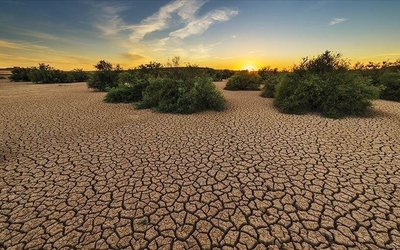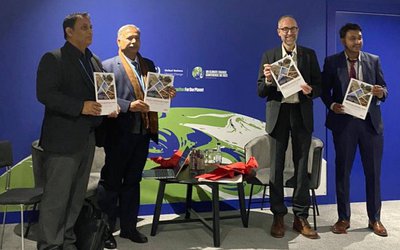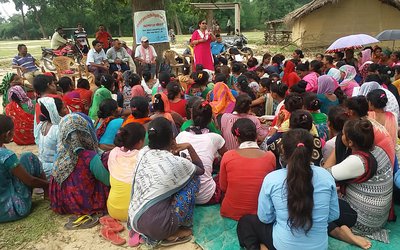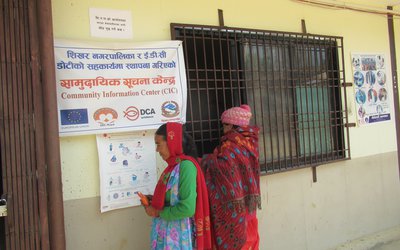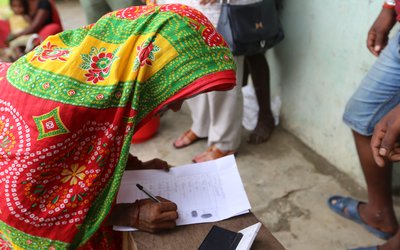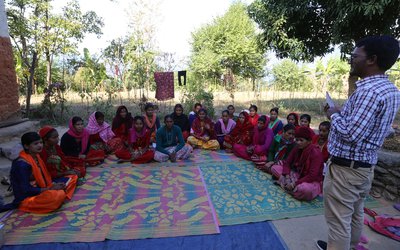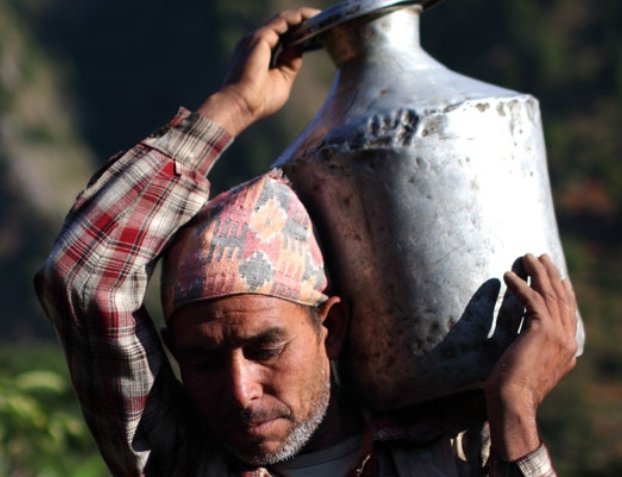
Figures released today reveal the scale of the challenge ahead to bring universal access to water and sanitation in Nepal by 2030, the international development organization WaterAid said.
WaterAid’s analysis of figures released today by the Joint Monitoring Program -- a body set up by Unicef and the World Health Organization to collate data on water and sanitation coverage -- shows that Nepal will deliver a community source of clean water within a 30-minute round trip to everyone by 2038.
The picture for sanitation is worse with projections showing that at the current rate of progress, everyone in Nepal will have basic sanitation services by 2046. Currently 12% of population in Nepal does not have clean water and 54% do not have a decent toilet.
Furthermore, earlier definitions of access to clean water required that a person have access to a water source built to protect the water from contamination, such as a pump or a covered well. With this new set of definitions, the United Nations has set the vision higher - for every household to have its own water points, available when needed, and regularly tested to make sure it is safe.
By this definition, at present only 27% of people in Nepal have a safely managed water supply, while there is insufficient data available as to how many people in Nepal have access to safely managed sanitation. Worldwide, the latest statistics show that 839 million people – or around 11% of the global population - do not have access to clean water.
This number has risen from the previous 663 million figure, largely because the 264 million who have to spend over half an hour in their round-trip to collect clean water are now deemed to only have a “limited” water service. And 2.3 billion still do not have a decent toilet – around one in three of the world’s population. World leaders in 2015 committed to the UN Sustainable Development Goals (SDGs) including Goal 6, which aims to make sure by 2030 that every household in the world has its own tap and toilet delivering safe water and safe sanitation – a standard 2 known as “safely managed”.
This is a new level of ambition, building on the achievements of the Millennium Development Goals. WaterAid is fully behind the vision and ambition of the United Nations to ensure that everyone achieves the human right to safe water and toilets.
WaterAid commends the Government of Nepal for its leadership and pivotal role in accelerating momentum on Open Defecation Free (ODF) campaign and increase in water coverage. However the above data shows a grim situation that needs rethinking approaches to achieve a step change in sector performance for universal access to water, sanitation and hygiene in Nepal by 2030.
WaterAid Nepal, Country Director Tripti Rai said, “the fact that so many of the world’s population still have to exist without access to the essentials of life – clean water and a decent toilet – is shameful. There is clear consensus on the transformative power of those services – we know for example that for every £1 spent, there is a £4 boost to the economy.
“We know that women live more fulfilling and productive lives when they are freed from the daily burden of fetching water that will make their families sick and then nursing their children back to health. We know that children are more able to concentrate on their lessons when they can get a clean drink of water and go to the toilet. We know that if people are able to wash their hands, they help stop the spread of germs in their community,” Rai Said.” It is unfortunate but a sad reality that women and girls are discriminated during menstruation and still more to be done for promoting menstrual hygiene management so that these women and girls can lead dignified lives.”
“If the world galvanised to make sure that no one ever had to worry about where to get water to drink, or go to the toilet or wash their hands, we could save the lives of so many of the 289,000 children under five who die each year from diarrhoea linked to dirty water or lack of sanitation. “The United Nation’s vision of working taps, toilets and hand-basins for every household by 2030 is absolutely the right goal because it will truly transform lives.” “But we have only another 13 years to get there which means that all of us, across government, civil society, water and sanitation companies and in every community are working with passion, grit, generosity and vision to bring this historic moment to pass.”
- TANAHU HYDROPOWER PROEJCT: A Significant Achievement
- Apr 15, 2024
- AMBASSADOR HANAN GODAR: Sharing Pain With A Nepali Family
- Mar 30, 2024
- VISIT OF KfW AND EIB TO NEPAL : Mission Matters
- Mar 25, 2024
- NEPAL BRITAIN SOCIETY: Pratima Pande's Leadership
- Mar 24, 2024
- NEPAL ARMY DAY: Time To Recall Glory
- Mar 15, 2024

